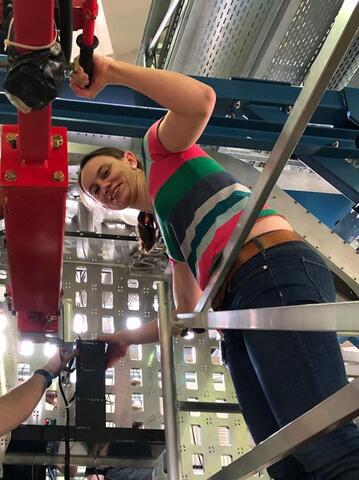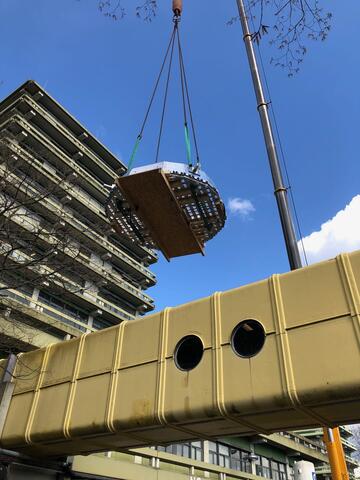Workshop „Physics Opportunities with Proton Beams at SIS100” was held in Wuppertal
PANDA meetings
04/03-08/03 2024 CM 24/1 in Münster
24/06-28/06 2024 CM 24/2 at GSI
25/06-26/06 2024 FEE/DAQ Workshop
04/11-06/11 2024 CM 24/3 at GSI
05/03-07/03 2025 WS at GSI
16/06-20/06 2025 CM 25 in Uppsala
The PANDA DIRC Detectors at FAIR
Carsten Schwarz for the PANDA Cherenkov Group
PA-PRO-2017-014.pdf
(823.89 KB)
N/A
The PANDA detector at the international accelerator Facility for Antiproton and Ion Research
in Europe (FAIR) addresses fundamental questions of hadron physics. An excellent hadronic
particle identification (PID) will be accomplished by two DIRC (Detection of Internally Reflected
Cherenkov light) counters in the target spectrometer. The design for the barrel region covering polar
angles between 22deg to 140deg is based on the successful BABAR DIRC with several key improvements,
such as fast photon timing and a compact imaging region. The novel Endcap Disc DIRC
will cover the smaller forward angles between 5deg (10deg) to 22deg in the vertical (horizontal) direction.
Both DIRC counters will use lifetime-enhanced microchannel plate PMTs for photon detection in
combination with fast readout electronics. Geant4 simulations and tests with several prototypes
at various beam facilities have been used to evaluate
in Europe (FAIR) addresses fundamental questions of hadron physics. An excellent hadronic
particle identification (PID) will be accomplished by two DIRC (Detection of Internally Reflected
Cherenkov light) counters in the target spectrometer. The design for the barrel region covering polar
angles between 22deg to 140deg is based on the successful BABAR DIRC with several key improvements,
such as fast photon timing and a compact imaging region. The novel Endcap Disc DIRC
will cover the smaller forward angles between 5deg (10deg) to 22deg in the vertical (horizontal) direction.
Both DIRC counters will use lifetime-enhanced microchannel plate PMTs for photon detection in
combination with fast readout electronics. Geant4 simulations and tests with several prototypes
at various beam facilities have been used to evaluate





